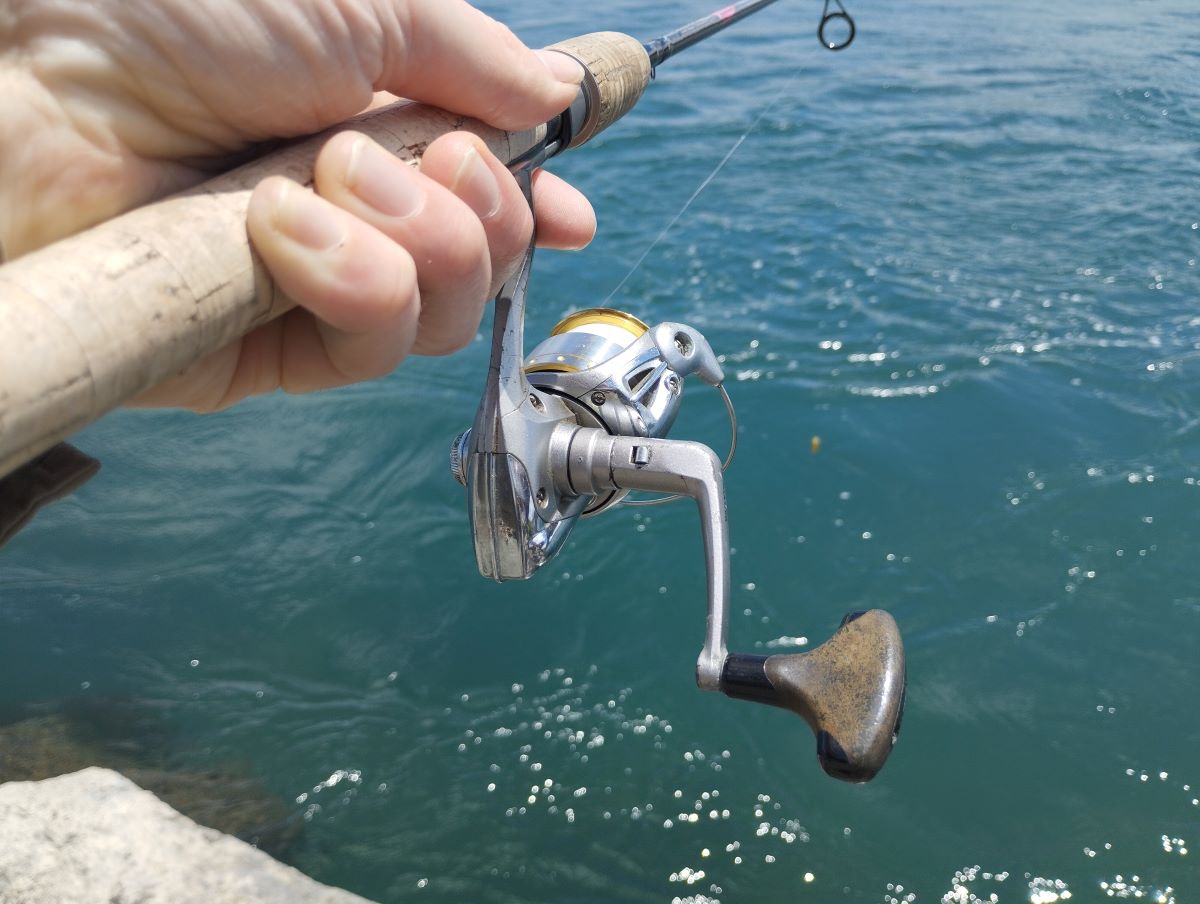What is the best line type when fishing for trout, how does braid compare with monofilament? Does the choice even matter?
In the chart below, I have highlighted the key differences. In the next part of the article, I will discuss why each of these points may or may not matter.
| Braid | Floats Does not stretch Excellent sensitivity No memory Longer casts Lasts longer |
| Monofilament | Cheaper More beginner-friendly No need for a leader No need for backing Transparent Stronger knots More abrasion-resistant under tension |
Why fish braid for trout
1) Floats
The fact that braid floats can be very useful with various techniques, usually, ones that involve using a float, or a floating lure.
A floating line is also easier to see and track as it moves across the water surface. A floating line, also snags less on underwater structure.
For example, there is one lake I fish in which is full of some sort of freshwater mussel, because monofilament sinks, it quite often gets caught in the shellfish, resulting in plentiful snags.
2) Does not stretch
There is almost no stretch in braided fishing line, this allows for excellent sensitivity. When fishing with braid, I can feel most vibrations as it passes through the line making it a lot easier to detect a strike, nibble, or even if the line is rubbing along the bottom.
3) No memory
Braid has very little memory compared with monofilaments, this allows the use of spinning lures without worrying about wind knots.
Wind knots are not actually caused by the wind, but by twists doubling in on themselves. This creates a knot that greatly weakens the lines.
4) Braid cast further
Because the braided line is a lot thinner than monofilament, it casts much better. There is no easier way to increase casting distance than spooling a reel with a good casting braid.
The thinner the diameter, the longer the cast.
5)Longevity
Braid is a lot more durable than monofilament, it does not suffer from UV damage and seems to maintain its strength for longer. I usually replace my monofilament at the end of every season, sometimes more if I use a reel a lot.
While I have fished the same braid for as long as 5 years. Yes, the reel only saw occasional use, but still impressive.
Why fish Monofilament
1)Cheaper
Mono is a lot cheaper than braid, a spool of decent mono can be brought for around $7, a comparable spool of braid typically retails closer to $20 . Then there is also the need for backing if you want to fill the spool. So, to fill a reel with mono, is often a third of the cost of filling it with braid.
2) More beginner friendly
Fishing with monofilament is in many ways easier, there is no need for leaders, backings and the knots tighten down nicely.
Monofilament also seems to cast a bit slower, It is hard to explain but braid can fly off the line so quickly that it catches some fishermen off guard.
Mono is also less likely to cut into your skin, during a missed time cast or when grabbing the leader to control a fish. I have cut myself on braid more times than I care to remember, and every time I cast, the braid seems to find an old cut reopening it.
3) No need for leaders
Leaders are essential when fishing with braid, because otherwise the trout will be able to see the braided line, but because monofilament is naturally clear, the trout have a much harder time seeing it.
For readers who are new to fishing, a leader is simply a length of monofilament tied between the mainline and the leader. Its main use is to hide the braid from the fish, but they are also more abrasion resistant, and because of the thicker diameter can be harder for the fish to bite through.
4) No need for backing
Braid has a very thin diameter, which means it can take a lot to fill a reel. So to save many, some fishermen partly fill their reels with monofilament first.
This monofilament is called the backing, it serves two main purposes. First, it prevents the braid from slipping around the spool, but equally as important it can save a lot of money. Few of fishermen really need more than 100 yards of line at any one time, so filling a reel with 300 yards is just wasteful.
So while backing is generally a good thing, it is also an extra hassle. Mainly because you have to guess how much backing is required to partly fill the reel. This is mostly just guesswork, but get it wrong and you might end up with too much, or not enough braid to fill the reel to capacity..
5) Monofilament is naturally Transparent
Most monofilaments are rather clear, which makes it more difficult for the trout to see. The less visible a line is, the more likely trout will take the bait (or lure).
6) Stronger, easier knots
Knots tied in monofilament are generally stronger, and faster to tie than knots that involve braid.
Because braid is thin, and often a bit shiny. It is much harder to properly secure a knot.
With that said, there are plenty of knots that work well with braid, and once learned there should not be much of a difference in knot strength between the two materials.
If too lazy to learn new knots, in most cases, increasing the number of wraps can greatly improve the strength of most knots when used with braid.
7) More abrasion-resistant under tension
Microfilament is a lot stronger than braid when under tension, when the line is tight rubbing against a sharp rock can easily cut through a length of braid, while the more stretchy monofilament is more likely to survive with just some light abrasion.

